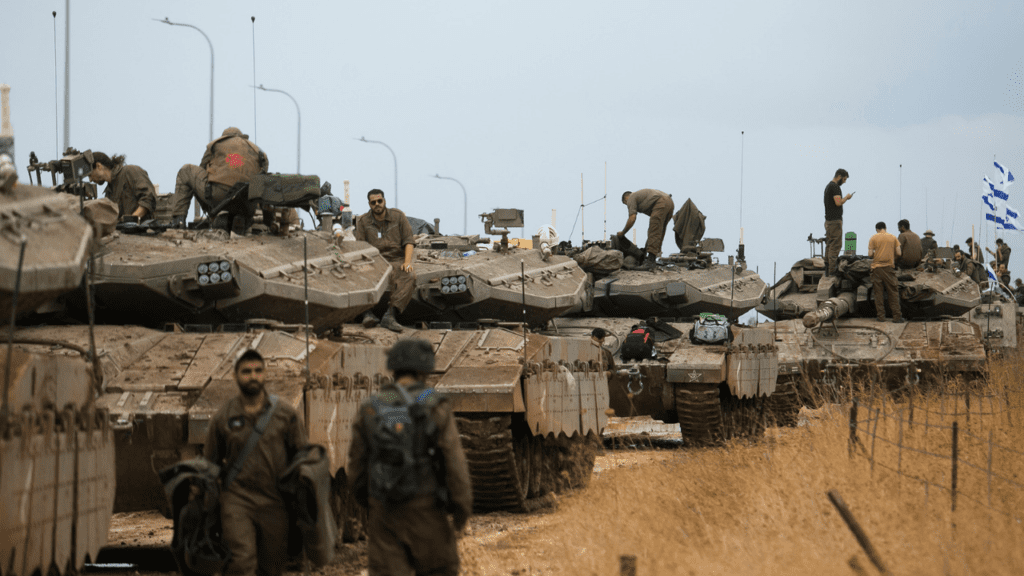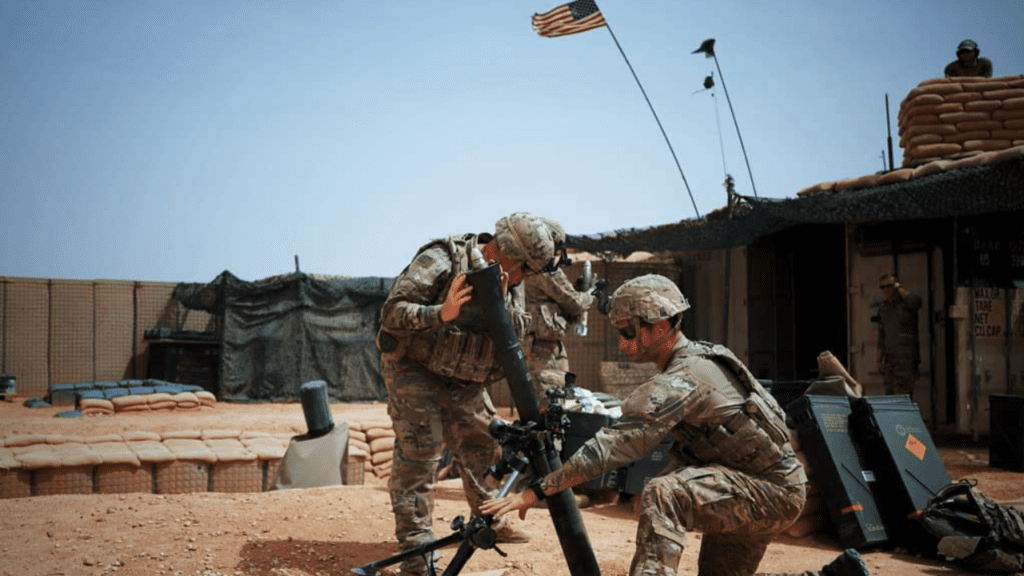None of the American counterattacks—including the most recent one in Iran that struck multiple terrorists connected to the Iranian-backed Kataib Hezbollah—have so far resulted in an increase in hostilities. The most recent strike happened on November 23, one day before a temporary ceasefire in the Gaza conflict was announced, according to a statement released by the Pentagon on Tuesday.

According to officials in both capitals, neither Washington nor Tehran wants the Gaza Strip crisis to worsen and turn into a larger regional confrontation.
Table of Contents
Hamas is designated as a terrorist organization by several countries, including the United States, Israel, and the European Union.
But in the seven weeks following the October 7th attack on Israel, spearheaded by Hamas, Iranian-backed militias have attacked American forces in Iraq and Syria with over 70 rocket and drone strikes. According to American sources, the Pentagon retaliated with four rounds of airstrikes, which left at least fifteen people dead.
National security authorities are worried that a regional conflict may really be sparked by a miscommunication during these back-and-forth strikes and each side’s perception that the other doesn’t want a broader fight. This occurs only two years after the America ended a 20-year conflict in South Asia and the Middle East.In spite of this, US intelligence services keep a careful eye on Iran and the organizations it backs, such as militias in Iraq and Syria, Hezbollah in Lebanon, and the Houthis in Yemen.
According to defense experts, Iran is warning the U.S. about the possible consequences for U.S. soldiers and interests in the region if Israel expands its campaign to target Iran’s nuclear program or Hezbollah, as it has done in the past. This is why Iran is carrying out these militia strikes.
Israel and Hezbollah have fought back and forth along Israel’s northern border with Lebanon ever since the conflict began. The Biden administration wanted Israel to stop these battles, according to an unidentified U.S. source. However, the person did not provide details about the steps the government is taking to stop Israel from fighting on two fronts.

America Tactical Responses Aim to Deter Iran: Diplomatic Channels Open
According to representatives of the Biden administration, the goal of the calibrated attacks is to dissuade Iran and its allies without causing damage, which may put the US in their sphere of influence. Senior military sources indicated that in recent weeks, Mr. Biden has ruled out the possibility of carrying out more robust bombing operations.Hossein Amir Abdollahian, Iran’s foreign minister, stated in an interview that Washington and Tehran have been communicating often since the beginning of the crisis, indicating a shared wish to prevent the situation from getting worse.
Professor Wali Nasr of Johns Hopkins University’s Department of International Affairs and Middle East Studies said, “The problem in how people are looking at it is that we’re thinking of Gaza in terms of just a small conflict.”
“Warnings on Escalation: Balancing Support in the Middle East”
We understand that America doesn’t want the war to spread, but we think America wants the war to be intense,” added Amir Abdollahian. America will pay a price if it keeps providing Israel with financial, diplomatic, and military backing while also helping Israel conduct military assaults on civilian targets in Palestine.”If the United States isn’t cautious, Gaza is only the beginning of something very enormous, very big indeed,’ Mr. Nasr declared.
President Biden has been briefed by intelligence experts on the possibility of a protracted conflict with Iran after the assaults on October 7. Intelligence services have been assessing for a few weeks now that Iran want to avoid a protracted battle; this view is still valid.The Biden administration asserts in public that containment is their approach.
The Pentagon sent two aircraft carriers and battleships, one in the Eastern Mediterranean and the other close to the Persian Gulf, together with a Marine Corps amphibious task force and several other combat aircraft in an effort to convey a deterrent message in response to Hamas’s strikes.
American defense officials have suggested targeted retaliation strikes against Iranian-backed militias in Iraq and Syria in response to drone attacks on military sites, spurred by this intelligence. Mr. Biden and National Intelligence Director Avril D. Haines talked about possible outcomes based on White House concerns.

“US Strikes Alleged Militant Sites in Syria: No Casualties Reported”
Nonetheless, American officials believe that Iran and the militias it supports in the alliance are to blame for the numerous rocket and drone strikes on US soldiers in Syria and Iraq.On October 27 and November 8, US airplanes attacked war material storage locations in eastern Syria. The Pentagon made it clear that no one was hurt during these operations.
American airstrikes on facilities utilized by Iran’s Islamic Revolutionary Guard Corps and its affiliates in eastern Syria on November 12th resulted in the deaths of six or seven people. In one blow, a significant war material bunker was destroyed, and Pentagon authorities said that this gave weapons for the most recent strikes.”
Please be aware that although the tone is impartial and informative to effectively deliver the message, it may contain sensitive or complex political topics.* “Our strikes have significantly reduced the reach of these militia groups and their armaments,” said Pentagon spokesman Sabrina Singh at the time.


1 thought on “Avoiding a America-Iran: Escalation.Risks of a Larger Conflict, as Officials Warn””